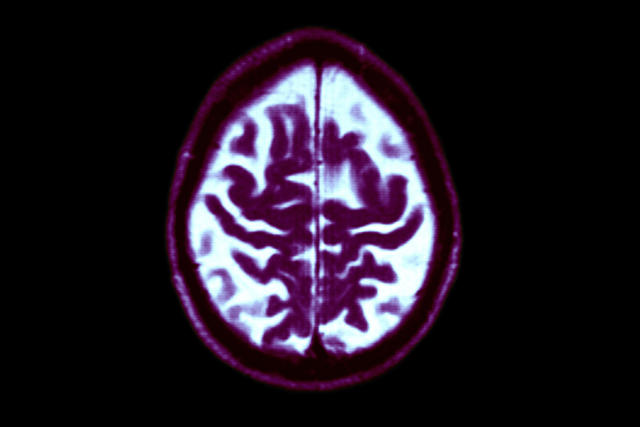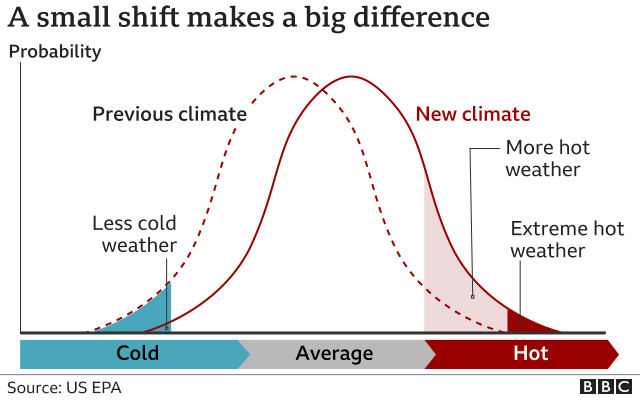Science Daily News | 18 Jul 2023

Views (100)

Webb telescope captures tantalizing evidence for mysterious 'dark stars'
Scientists for the past 15 years have been looking for evidence of a type of star only hypothesized but never observed - one powered not by the fusion of atoms like the sun and other ordinary stars but by mysterious stuff called dark matter. Thanks to the James Webb Space Telescope's ability to peer back to the dawn of the universe, the first good candidates to be "dark stars" have been identified. The three objects spotted by Webb, which was launched in 2021 and began collecting data last year, were initially identified last December as some of the universe's earliest-known galaxies but, according to researchers, instead might actually be humongous dark stars.

By Will Dunham
WASHINGTON (Reuters) - Scientists for the past 15 years have been looking for evidence of a type of star only hypothesized but never observed - one powered not by the fusion of atoms like the sun and other ordinary stars but by mysterious stuff called dark matter.
Thanks to the James Webb Space Telescope's ability to peer back to the dawn of the universe, the first good candidates to be "dark stars" have been identified.
The three objects spotted by Webb, which was launched in 2021 and began collecting data last year, were initially identified last December as some of the universe's earliest-known galaxies but, according to researchers, instead might actually be humongous dark stars.
Dark matter, invisible material whose presence is known mainly based on its gravitational effects at a galactic scale, would be a small but crucial ingredient in dark stars. These stars are described as made almost entirely of hydrogen and helium - the two elements present during the universe's infancy - with 0.1% of their mass in the form of dark matter. But self-annihilating dark matter would be their engine.
Dark matter is invisible to us - it does not produce or directly interact with light - but is thought to account for about 85% of the universe's matter, with the remaining 15% comprising normal matter like stars, planets, gas, dust and Earthly stuff like pizza and people.
Dark stars would be able to achieve a mass at least a million times greater than the sun and a luminosity at least a billion times greater, with a diameter roughly ten times the distance between Earth and the sun.
"They're big puffy beasts," said Katherine Freese, a theoretical astrophysicist at the University of Texas at Austin and senior author of the research published in the journal Proceedings of the National Academy of Sciences.
"They are made of atomic matter and powered by the little bit of dark matter that's inside them," Freese added.
Unlike ordinary stars, they would be able to gain mass by accumulating gas falling into them in space.
"They can continue to accrete the surrounding gas almost indefinitely, reaching supermassive status," said Colgate University astrophysicist and study lead author Cosmin Ilie.
They would not have been as hot as the universe's first generation of ordinary stars. It was the nuclear fusion occurring in the cores of those stars that spawned elements heavier than hydrogen and helium.
The three objects pegged as potential dark stars date to early in the universe's history - one from 330 million years after the Big Bang event that got the cosmos going 13.8 billion years ago, and the others from 370 million years and 400 million years after the Big Bang.
Based on the Webb data, these objects could be either early galaxies or dark stars, Freese said.
"One supermassive dark star is as bright as an entire galaxy, so it could be one or the other," Freese added.
While there is not enough data to make a definitive judgment about these three, Freese said, Webb may be able to obtain fuller data on other similarly primordial objects that could provide "smoking gun" evidence of a dark star.
Conditions in the early universe may have been conducive to formation of dark stars, with high dark matter densities at the locations of star-forming clouds of hydrogen and helium. Such conditions are highly unlikely today.
Freese and two colleagues first proposed the existence of dark stars in 2008, basing the name on the 1960s Grateful Dead song "Dark Star."
"It would be really super exciting to find a new type of star with a new kind of heat source," Freese said. "It might lead to the first dark matter particles being detected. And then you can learn about the properties of dark matter particles by studying a variety of dark stars of different masses."
(Reporting by Will Dunham, Editing by Rosalba O'Brien)
Is climate change causing droughts, heatwaves, wildfires and floods?
Scientists say many extreme weather events are becoming more frequent and intense in a warming world.

Extreme weather is becoming more frequent and more intense in many places because of climate change.
Scientists say this will continue whilst humans keep releasing planet-warming greenhouse gases.
Here are four ways climate change is linked to extreme weather.
Even a small increase to average temperatures makes a big difference.
This is because the whole distribution of daily temperatures shifts to warmer levels, making hotter days more likely and more extreme.
Heatwaves are also becoming longer and more intense - including in the UK.
Linking climate change and individual droughts can be difficult. The availability of water is not just down to temperature and rainfall.
But longer and more intense heatwaves can worsen droughts by drying out soils. The air above then warms up faster, leading to more intense heat.
Demand for water from humans and farming in hot weather puts even more stress on the water supply.
Extreme and long-lasting heat draws more and more moisture out of the ground and vegetation.
These tinder-dry conditions provide fuel for fires, which can spread at an incredible speed, particularly if winds are strong.
The warmer it becomes, the more moisture the atmosphere can hold.
This results in more droplets and heavier rainfall, sometimes in a shorter space of time and over a smaller area.
Scientists cannot say for certain that they were caused by climate change, but the floods are consistent with the changes they expect in a warming world.
Please include a contact number if you are willing to speak to a BBC journalist. You can also get in touch in the following ways:
WhatsApp: +44 7756 165803
Typhoon Talim: Thousands evacuated as typhoon hits southern China
Vietnam is also bracing to evacuate people from areas forecast to be hit by the powerful storm.

A powerful typhoon has made landfall in China's Guandong province with nearly 230,000 people evacuated from their homes.
Talim, the fourth typhoon this year, hit the southern coast with winds of nearly 140km/h (87mph).
Storm surges lashed the coast, while fierce winds and rain led to hundreds of flights and trains being cancelled.
Vietnam said it was evacuating around 30,000 people in Quang Ninh and Hai Phong, forecast to be hardest hit.
Talim made landfall at around 10:20 local time (14:20 GMT), the China Meteorological Administration said, issuing an orange alert, its second-highest warning in a four-tier system.
The typhoon could lose speed by Tuesday morning and "weaken and dissipate over northern Vietnam" on Wednesday, it added.
Those evacuated in Guangdong included more than 8,000 fish-farm workers who were brought ashore, Chinese state media say.
Local authorities also ordered the closure of dozens of coastal tourist destinations.
The typhoon is expected to move to the Beibu Gulf in the South China Sea, and may make a second landfall in the coastal area of Guangxi Zhuang Autonomous Region on Tuesday morning, China's National Meteorological Centre said.
Waves of up to six metres (20 feet) were expected to hit the southern island province of Hainan, the local marine forecasting station warned.
Texas power use hits record high as heatwave lingers
The Electric Reliability Council of Texas (ERCOT), which operates the grid for more than 26 million customers representing about 90% of the state's power load, has said it has enough resources available to meet soaring demand. Texas residents have worried about extreme weather since a deadly storm in February 2021 left millions without power, water and heat for days as ERCOT struggled to prevent a grid collapse after the closure of an unusually large amount of generation. Although overall U.S. power demand is projected to ease in 2023 after hitting a record high in 2022, rising economic and population growth is expected to keep boosting electric use in Sun Belt states like Texas.

(Reuters) - Demand for power in Texas hit a record high on Monday as homes and businesses kept air conditioners cranked up to escape a heatwave.
The Electric Reliability Council of Texas (ERCOT), which operates the grid for more than 26 million customers representing about 90% of the state's power load, has said it has enough resources available to meet soaring demand.
Texas residents have worried about extreme weather since a deadly storm in February 2021 left millions without power, water and heat for days as ERCOT struggled to prevent a grid collapse after the closure of an unusually large amount of generation.
Although overall U.S. power demand is projected to ease in 2023 after hitting a record high in 2022, rising economic and population growth is expected to keep boosting electric use in Sun Belt states like Texas.
After setting 11 demand records last summer, ERCOT said usage hit a preliminary 81,911 megawatts (MW) on Monday, which would top the current all-time high of 81,406 MW set on July 13.
That is the fourth record high this summer and will likely be broken again on Tuesday with demand expected to reach 86,575 MW.
One megawatt can power around 1,000 U.S. homes on a typical day, but only about 200 homes on a hot summer day in Texas.
Meteorologists at AccuWeather forecast high temperatures in Houston, the biggest city in Texas, would hit at least 100 degrees Fahrenheit (37.8 Celsius) every day from July 17-21. That compares with a normal high of 94 F for this time of year.
Forecasts for record demand boosted next-day prices at the ERCOT North Hub, which includes Dallas, to a six-month high of $475 per megawatt hour for Monday. That compares with an average of $38 so far this year, $78 in 2022 and a five-year (2018-2022) average of $66.
(Reporting by Scott DiSavino and Harshit Verma; Editing by Barbara Lewis and Stephen Coates)
Yacht called Kaos vandalized by climate activists in Ibiza
Activists defaced the yacht as a protest against carbon emissions, which are highest among the world's wealthiest countries and individuals.

Spanish climate activists defaced a multimillion-dollar superyacht docked in Ibiza over the weekend, a social media video shows. The yacht, a sprawling vessel called Kaos, is reportedly owned by Nancy Walton Laurie, a billionaire Walmart heiress.
Members of Futuro Vegetal pointed out that carbon emissions across the board are highest among the world's richest people.
"The richest 1% of the world population pollutes more than the poorest 50%," the activists are heard saying in the video.
"They are condemning us to a future of pain, misery and desolation," they continued. "They are destroying our planet, compromising the habitability of the land and everything, to lead a standard of living that goes beyond the limits of reason."
The two climate activists who appeared in Futuro Vegetal's social media video were detained on Sunday, according to the group, which said in an update shared on Twitter that the pair would likely be released on Monday afternoon.
Its report that year warned that the global emissions gap, meaning the "difference between where we are likely to be and where we need to be" on climate policy, was dangerously large, and the wealthy were primarily responsible. At the time, the U.N. report said just 10% of the world's population emitted nearly half of the world's carbon pollution.
CBS News reached out to Walmart and to Laurie but did not receive immediate replies.
Eli Lilly's experimental Alzheimer's drug slows progression of the disease, study finds
An Alzheimer's drug from Eli Lilly slowed decline of the disease by up to 48%, or about 7 and a half months. The drug comes with risks of serious side effects including brain bleeds.

There may soon be another option for an Alzheimer’s drug capable of slowing the progression of the devastating disease.
An experimental Alzheimer’s drug from drugmaker Eli Lilly helped slow cognitive decline in patients in the early stages of the illness, according to the results of a late-stage clinical trial. Side effects of the drug, called donanemab, however, were serious in some cases, and included brain swelling and brain bleeds.
Both drugs are monoclonal antibodies that work by targeting amyloid in the brain, considered a hallmark of Alzheimer’s disease. (Another drug, Biogen’s Aduhelm, works in a similar way, but has fallen out of favor after a congressional investigation found serious flaws with its approval process.)
The thinking goes that by targeting amyloid, disease progression could be slowed.
“This is something we have hypothesized as a field for a long time but Lilly has now demonstrated this in a robust fashion,” said Donna Wilcock, director of the Center for Neurodegenerative Disorders at the Indiana University School of Medicine. “I am very impressed by the results.”
In Lilly’s phase 3 clinical trial of 1,736 patients with mild cognitive impairment or early-stage disease, donanemab slowed the progression of Alzheimer’s by 29% after 18 months compared to a placebo. The results were similar to what was seen with Leqembi, which led to 27% decline over the same time period, though experts note that the results are not directly comparable because both drugs weren’t studied together in a single clinical trial.
Patients in the trial received donanemab or a placebo once a month, intravenously.
Decline was measured using the clinical dementia rating scale, which focuses on how well patients performed in six categories: memory, orientation, judgment and problem solving, community affairs, home and hobbies, and personal care.
Patients in the placebo group scored, on average, 2.42 on the scale after 18 months. Those who got donanemab scored, on average, 1.72, a 0.7 difference or about a 29% slower rate of decline.
When Lilly excluded a subset of patients with higher levels of a protein called tau in the brain — which is more difficult to treat — the drug performed even better, slowing progression by 36% to 48%. In practical terms, those patients had an additional seven and half months before they reached the same level of cognitive decline as people on a placebo, according to Lilly.
Lilly’s drug “doesn’t stop the disease, it doesn’t make people better, but it delays the progression of the disease,” said Dr. Ronald Petersen, a neurologist at the Mayo Clinic in Rochester, Minnesota. “I think that’s clinically meaningful to patients.”
Almost half of the patients who got donanemab did not show signs of cognitive decline in the first year.
The benefits of the treatment appeared to continue over the course of the trial, Mintun said, even though many patients had stopped taking the medication about 6 months to a year after the amyloid in their brains had disappeared.
Petersen, who has consulted for Lilly in the past but was not involved with donanemab, said that’s important because people may be able to temporarily stop taking the medication once the amyloid is gone, saving them money and reducing the risk of side effects.
While Lilly’s results and Leqembi’s recent approval are a source of hope for patients and their families, the potential of these amyloid-targeting drugs is hampered by concerns about their potentially life-threatening side effects, which include brain swelling and brain bleeding.
In what came as a surprise to Eisai, the excitement over Leqembi's approval earlier this month was tempered by the FDA’s decision to include its strongest safety warning label on the drug, called a boxed warning, which noted that these side effects could lead to seizures and death.
Lilly said it has filed for approval in the United States, and hopes to hear from the FDA by the end of the year. If approved, Petersen said, it would make sense for the agency to include a similar boxed warning, since the rates of the side effects of donanemab are “as high or greater” than those of Leqembi.
In Lilly’s trial, about 37% of patients who got donanemab developed either brain swelling or brain bleeding, and about 6% experienced symptoms from the condition. Three patients died as a result.
The risk of side effects, coupled with what is expected to be a high price tag, may give many families pause about getting the drug for a loved one.
Because Alzheimer’s is such a devastating disease, however, there are patients and families who are going to want the drug, despite the side effects, said Arthur Caplan, the head of the Division of Medical Ethics at NYU Langone Medical Center in New York City.
“There are going to be people who say, ‘My loved one is doomed, and if they have a brain bleed, so be it,’” he said.
Allan Fisher, a 68-year-old resident of Parkland, Florida, enrolled in the trial in March 2022, about nine months after being diagnosed with early-stage Alzheimer’s disease.
He got monthly infusions of donanemab, which continued until about a month ago when he completed the trial. (A spokesperson for Lilly confirmed Fisher was getting the drug, not the placebo.) He also got a PET scan and an MRI every six months to monitor for side effects and to see if the amyloid was disappearing. Aside from experiencing slight discomfort from the infusions, he said he did not encounter any side effects.
“I feel great,” he said.
While he is no longer on the medication, Fisher said he believes the medication allowed him to be able to spend more time with his grandson.
His wife, Louise, said they are hoping he will be able to start the medication again in November, when a separate trial is set to start.
0 Likes
